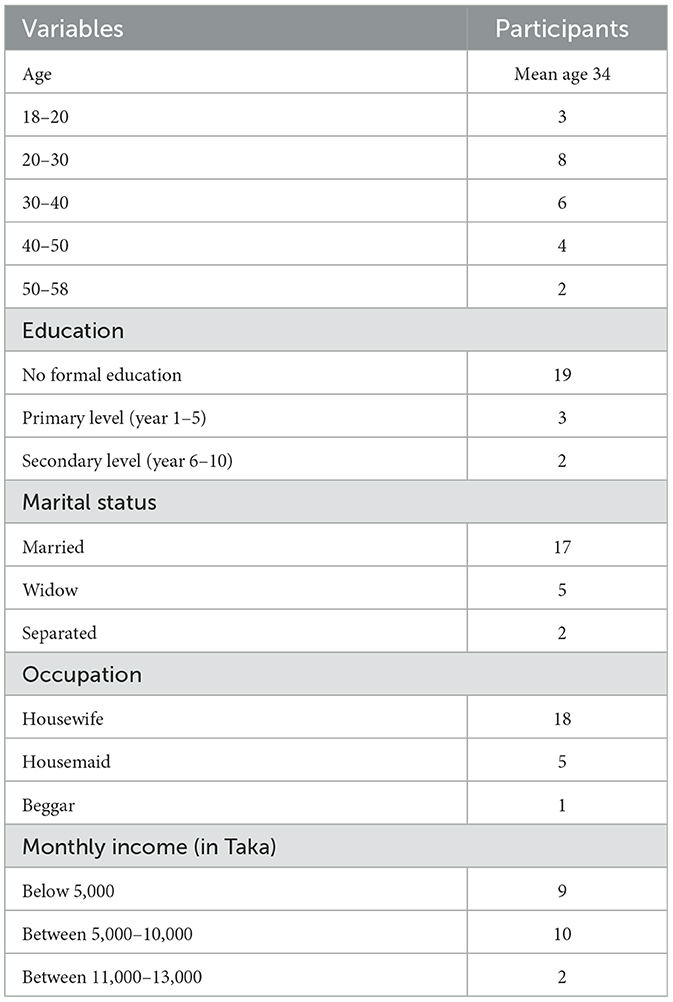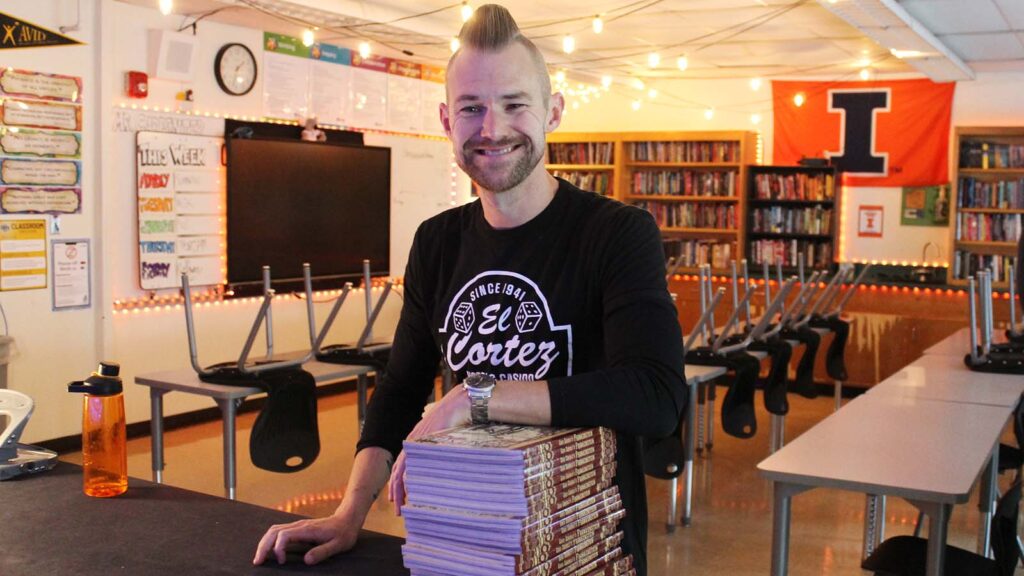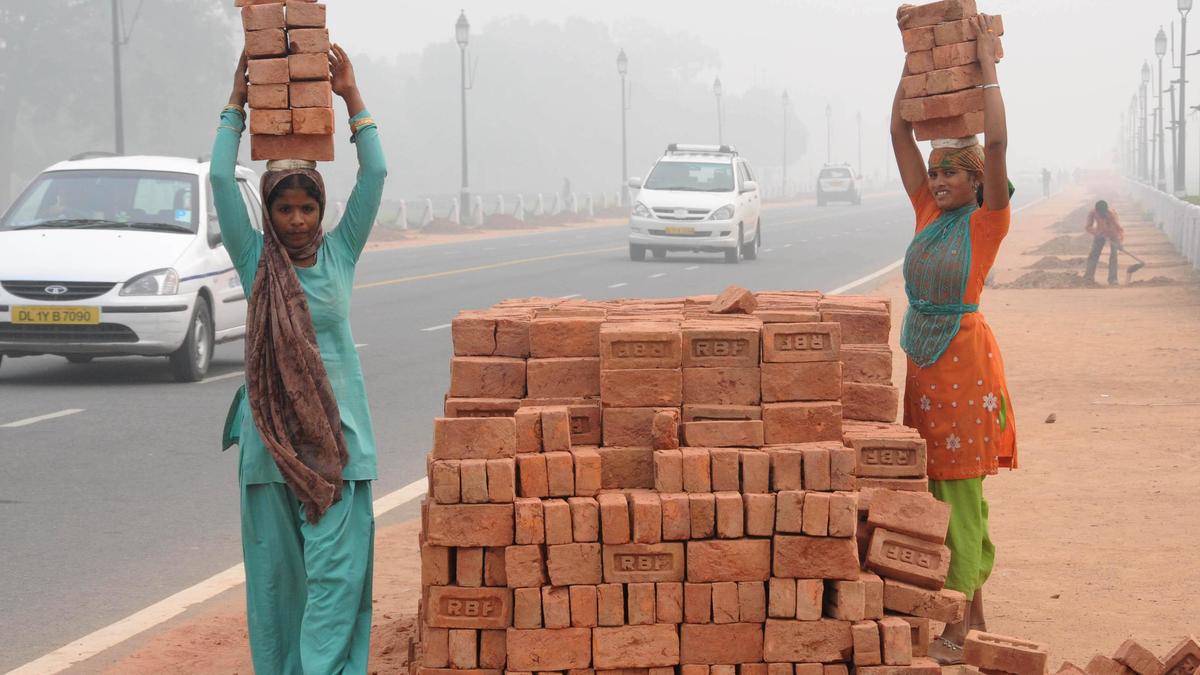Preparing for the next flood: Protecting women’s health in Bangladesh – UN News

Report on Climate Resilience and Reproductive Health Initiatives in Sunamganj, Bangladesh
Executive Summary
This report details a United Nations Population Fund (UNFPA) initiative in Sunamganj, Bangladesh, a region highly susceptible to climate-induced disasters. The project focuses on strengthening community resilience and ensuring access to reproductive healthcare, directly contributing to several Sustainable Development Goals (SDGs), particularly SDG 3 (Good Health and Well-being), SDG 5 (Gender Equality), and SDG 13 (Climate Action).
Project Context: Climate Vulnerability and its Impact on SDGs
The Sunamganj district faces severe and frequent flooding, a direct consequence of climate change. These environmental shocks disproportionately affect the region’s 670,000 women of reproductive age, creating significant barriers to achieving key development targets.
- SDG 3 (Good Health and Well-being): Floods disrupt access to essential maternal and reproductive health services, increasing risks associated with pregnancy and childbirth.
- SDG 5 (Gender Equality): Climate disasters exacerbate existing gender inequalities, limiting women’s autonomy and access to information and services.
- SDG 13 (Climate Action): The local population’s direct experience with intensified floods, heatwaves, and altered seasons underscores the urgent need for climate adaptation and resilience strategies.
Initiative Implementation: A Multi-faceted Approach to a Sustainable Future
Supported by UNFPA and the Swedish International Development Cooperation Agency, the “Climate Resilience Health System and Community” initiative employs several strategies to empower communities and build resilience, aligning with a holistic view of sustainable development.
Training and Preparedness for Climate Action (SDG 13)
The project provides direct training to women of reproductive age, equipping them with the knowledge for disaster preparedness.
- Beneficiaries learn essential skills for protecting themselves and their families during floods.
- Training includes practical preparation, such as assembling emergency kits and identifying safe evacuation routes.
- This proactive approach builds community resilience, a core tenet of climate action.
Strengthening Health Systems and Gender Equality (SDG 3 & SDG 5)
A network of trained local volunteers is central to the project’s success, bridging the gap between communities and formal health services.
- Volunteers are trained to educate women on topics from menstruation to safe childbirth during climate emergencies.
- They serve as a primary contact for dozens of families, facilitating access to maternal healthcare and family planning services, which directly supports SDG 3.4 and 3.7.
- This model empowers local women as community leaders, advancing SDG 5.
Community Mobilization and Empowerment (SDG 5 & SDG 11)
The initiative utilizes innovative community engagement tools to foster dialogue and challenge harmful social norms.
- Safe Community Spaces: These spaces allow women to discuss sexual and reproductive health openly, promoting bodily autonomy and well-being.
- Street Dramas: Volunteers perform plays addressing critical issues like maternal health, disaster preparedness, and the prevention of child marriage (a key target of SDG 5.3). These events have reached over 500 attendees per performance.
- Male Engagement: The program successfully involves men, training them to advocate for women’s and girls’ health, thereby transforming community dynamics and promoting shared responsibility.
Outcomes, Challenges, and Global Commitments
Reported Outcomes
The initiative has demonstrated positive impacts on community resilience and health outcomes. Testimonials confirm that trained individuals have successfully navigated flood crises, accessed previously unknown family planning tools, and secured safe, hospital-based deliveries for high-risk pregnancies. The engagement of men as advocates marks a significant step towards achieving gender equality at the community level.
Ongoing Challenges to SDG Achievement
Despite progress, significant obstacles remain in achieving comprehensive health and gender equality targets.
- Over 50% of deliveries in flood-prone areas still occur at home, posing risks to mothers and newborns (a challenge to SDG 3.1).
- Cultural taboos surrounding topics like menstruation persist, hindering open dialogue and access to information.
- Norms restricting women’s economic activity limit their overall empowerment and resilience.
Global Strategic Alignment
The challenges in Sunamganj reflect a global pattern addressed at events like the Global Symposium on Climate Justice. UNFPA leadership emphasizes that climate change is a critical threat to sexual and reproductive health and rights. The strategic imperative is to integrate gender-responsive measures into all climate negotiations and to strengthen the resilience of health systems and communities to withstand climate shocks, ensuring that progress towards SDGs 3, 5, and 13 is both robust and equitable.
SDGs Addressed in the Article
-
SDG 3: Good Health and Well-being
The article focuses heavily on improving health outcomes, particularly for women of reproductive age. It details initiatives to provide access to reproductive healthcare, family planning, and maternal healthcare services, especially in the context of climate-related disasters. The story of a woman with high blood pressure safely delivering at a hospital and another woman learning about family planning tools directly relates to this goal.
-
SDG 5: Gender Equality
The article highlights the empowerment of women and girls. It describes how women are trained as community volunteers and leaders, how they are educated about their bodies and rights, and how initiatives like street dramas are used to combat harmful practices like child marriage. The article explicitly mentions that the work is for “women’s empowerment” and aims to “stop early marriage, promote girls’ education, and ensure that women get access to maternal health care.”
-
SDG 13: Climate Action
The core context of the article is the vulnerability of the Sunamganj district to climate change, specifically the increasing frequency and intensity of floods. The initiatives described, such as training women in disaster preparedness and building community resilience, are direct responses to climate-related hazards. The article states that the “Climate Resilience Health System and Community initiative” is designed to help people prepare for and adapt to “climate shocks.”
-
SDG 17: Partnerships for the Goals
The article mentions the collaborative efforts of multiple organizations to achieve these goals. It explicitly names the United Nations Population Fund (UNFPA), the Swedish International Development Cooperation Agency, and the Government of Brazil as partners working together on the “Climate Resilience Health System and Community initiative” and the “Global Symposium on Climate Justice.”
Specific SDG Targets Identified
-
Target 3.1: Reduce the global maternal mortality ratio
The article addresses this target by focusing on safe childbirth. It highlights a case where a volunteer advised a family to go to the hospital for a delivery due to high blood pressure, resulting in a safe birth. It also notes the challenge that “over half of deliveries still occur at home,” indicating that improving access to skilled care during childbirth is a key objective.
-
Target 3.7: Ensure universal access to sexual and reproductive health-care services
This target is central to the article. The UNFPA’s work includes training women on family planning, as evidenced by Shakila Akhter’s statement: “I want to choose when I’m ready for another child.” The community sessions and street dramas educate women on topics from menstruation to childbirth, directly contributing to information and access related to sexual and reproductive health.
-
Target 5.3: Eliminate all harmful practices, such as child, early and forced marriage
The article explicitly states that one of the goals of the street dramas is to “stop early marriage.” This directly aligns with the objective of eliminating harmful practices that disproportionately affect girls.
-
Target 5.5: Ensure women’s full and effective participation and equal opportunities for leadership
The initiative empowers women to take on leadership roles. Shakila Begum becomes a volunteer and a point of contact for 75 families, and Taskira Hauque Tazin becomes a core member of the street theatre, sharing her experiences at conferences. This demonstrates women’s active participation and leadership within their communities.
-
Target 13.1: Strengthen resilience and adaptive capacity to climate-related hazards and natural disasters
The entire program described is an effort to build resilience in a flood-prone area. The training teaches women “what to carry, how to prepare and how to protect my family” during a flood. This is a direct implementation of strengthening adaptive capacity at the community level to cope with climate-related disasters.
Indicators for Measuring Progress
-
Indicator 3.1.2: Proportion of births attended by skilled health personnel
This indicator is implied when the article states, “In flood-prone villages in Sunamganj, over half of deliveries still occur at home.” This statistic serves as a baseline, and a reduction in this number would indicate progress towards ensuring safer childbirths.
-
Indicator 3.7.1: Proportion of women of reproductive age who have their need for family planning satisfied with modern methods
The article implies this indicator through the story of Shakila Akhter, who “now uses family planning tools she didn’t know about before.” The success of the program can be measured by the increase in the number of women who are aware of and use family planning methods.
-
Indicator 5.3.1: Proportion of women aged 20-24 years who were married or in a union before age 18
While no specific data is provided, the stated goal to “stop early marriage” through awareness campaigns directly points to this indicator as the metric for success. Progress would be measured by a decrease in the rate of child marriage in the community.
-
Indicator 13.1.2: Number of countries that have national and local disaster risk reduction strategies
The “Climate Resilience Health System and Community initiative” described in the article is a form of a local disaster risk reduction strategy. The number of communities or families reached by this initiative (e.g., Shakila Begum being the point of contact for 75 families) can be seen as a proxy indicator for the implementation of such strategies at a local level.
SDGs, Targets, and Indicators Analysis
| SDGs | Targets | Indicators (Mentioned or Implied) |
|---|---|---|
| SDG 3: Good Health and Well-being | Target 3.1: Reduce the global maternal mortality ratio.
Target 3.7: Ensure universal access to sexual and reproductive health-care services. |
Implied Indicator (for 3.1): Proportion of births attended by skilled health personnel (referenced by the fact that “over half of deliveries still occur at home”).
Implied Indicator (for 3.7): Proportion of women with a need for family planning satisfied with modern methods (referenced by women learning about and using new family planning tools). |
| SDG 5: Gender Equality | Target 5.3: Eliminate all harmful practices, such as child, early and forced marriage.
Target 5.5: Ensure women’s full and effective participation and equal opportunities for leadership. |
Implied Indicator (for 5.3): Prevalence of child marriage (referenced by the goal of street dramas to “stop early marriage”).
Implied Indicator (for 5.5): Proportion of women in managerial/leadership positions (referenced by women becoming community volunteers and advocates). |
| SDG 13: Climate Action | Target 13.1: Strengthen resilience and adaptive capacity to climate-related hazards and natural disasters. | Implied Indicator (for 13.1): Existence of local disaster risk reduction strategies (referenced by the community-based training on flood preparedness). |
| SDG 17: Partnerships for the Goals | Target 17.16: Enhance the Global Partnership for Sustainable Development, complemented by multi-stakeholder partnerships. | Mentioned Indicator: The existence of the partnership itself between UNFPA, the Swedish International Development Cooperation Agency, and the Government of Brazil to address the issues. |
Source: news.un.org

What is Your Reaction?
 Like
0
Like
0
 Dislike
0
Dislike
0
 Love
0
Love
0
 Funny
0
Funny
0
 Angry
0
Angry
0
 Sad
0
Sad
0
 Wow
0
Wow
0

























_1.png?#)























































